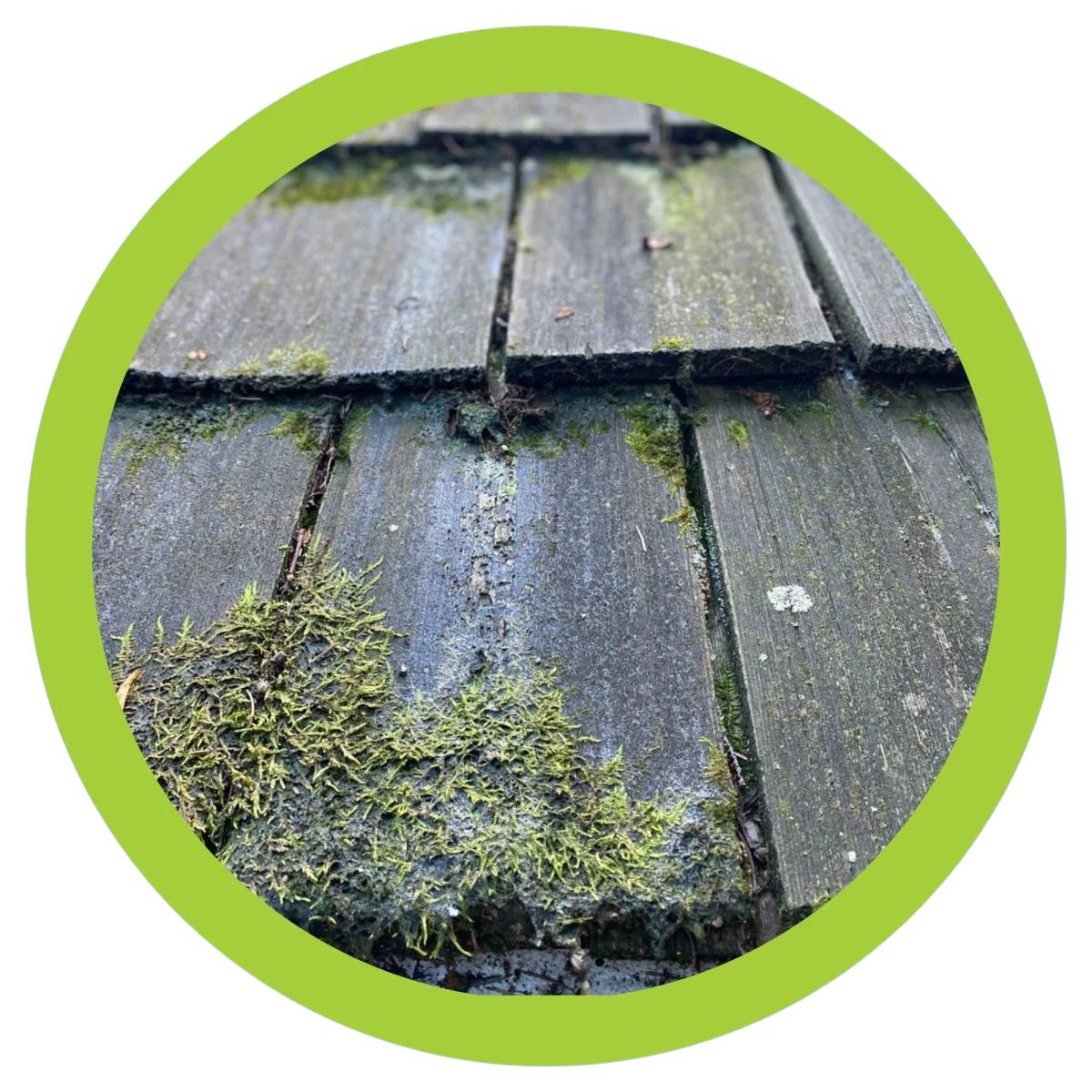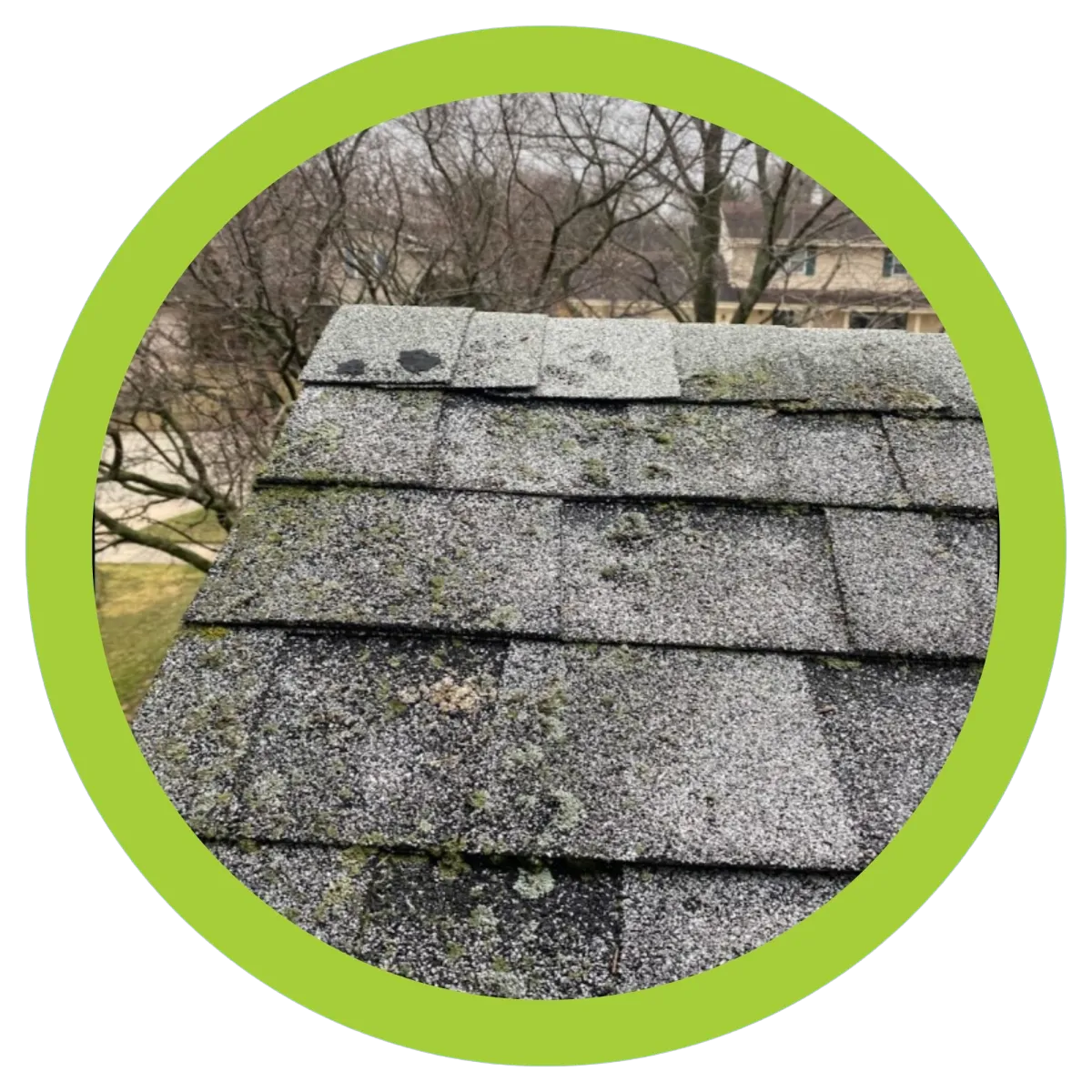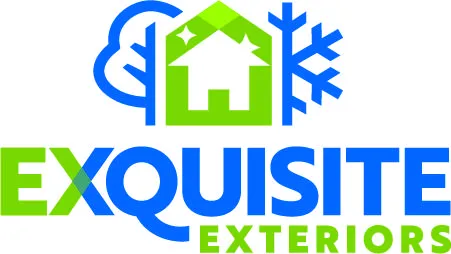What's Eating Your Roof?
Have you recently spotted unsightly black streaks on your roof or perhaps on your neighbor's?
If so, it's time to shine a light on an issue that many homeowners overlook until it's too late. That's right, we're talking about the silent destroyers of rooftops—algae, moss, molds, and lichen. Once you clue into this pervasive problem, you can't unsee the subtle signs of these organisms slowly devouring the very shield that protects your home. In this blog post, we tackle the "meat and potatoes" of what's feasting on your roof and why it should be a cause for immediate concern.
Algae
The Black Streak Culprit
The first sign of trouble is those black streaks that seem like nothing more than harmless signs of shingle aging. In reality, these streaks are thriving colonies of algae, which feast on the limestone filler commonly used in asphalt shingles. The algae don't just mar the aesthetic of your home; they shorten the life span of your roof and can potentially affect your health due to developing mold.
When left unchecked, these algae pave the way for their more robust counterparts—moss and lichen—to move in and establish themselves more prominently.

Moss and Lichen
More Than Just an Eyesore

Moss may seem like a quaint touch atop an old stone cottage, but when it's growing on your roof, it's a whole different story.
Moss thrives in environments that roofs often provide:
Persistent moisture from rainfall
Higher humidity levels
Limited direct sunlight exposure
Accumulation of organic debris, such as leaves
The issue with moss (and its partner in crime, lichen) isn't superficial. Both of these can retain moisture, and over time, this continual dampness can lead to degradation of your shingles. Not to mention, moss roots, although not like typical plant roots, can cause physical damage as they embed themselves in and lift shingle edges, making them more prone to wind damage and leaks.
The Hidden Costs of Neglect
Ignoring the issue doesn't just mean living with a dirty-looking roof; it comes with heavier consequences, including:
The decreased lifespan of your roof, requiring premature replacement
Potential for more significant damage during inclement weather
Higher risk of leaks which can lead to interior home damages
The possibility of increased allergens and reduced air quality
Defending your roof against these pests is about protecting your investment and your health.
Taking Action Against Roof Invaders
Now that you're equipped with this knowledge, what can you do about it?
Regular inspections and maintenance are key.
Here are some steps you can take:
Schedule regular roof cleaning with solutions designed to kill and remove these organisms.
Ensure your roof has adequate drainage and that gutters are clear to prevent water accumulation.
Trim back overhanging tree branches to decrease shade and debris on your roof..
Consider installing copper or zinc strips along the roof peak, which release metal ions that help prevent organism growth.
Consult with roofing professionals who can advise on protective measures suitable for your specific roof type.
Moss, algae, molds, and lichen are not just cosmetic issues; they pose real threats to the longevity and integrity of your rooftop. Your home's roof is its first line of defense against the elements. Don't allow these quiet invaders to compromise that. Be proactive, and ensure that what's over your head gives you peace of mind—not a cause for alarm.
Remember, a little attention goes a long way in preventing costly repairs or replacements. It's time to say goodbye to those pesky roof eaters and hello to a clean, healthy, and long-lasting roof.
Ready to address your roof concerns?
Contact Exquisite Exteriors at 414-315-9105 or
Scan this QR Code to schedule a FREE consultation.
Don't wait until it's too late!

